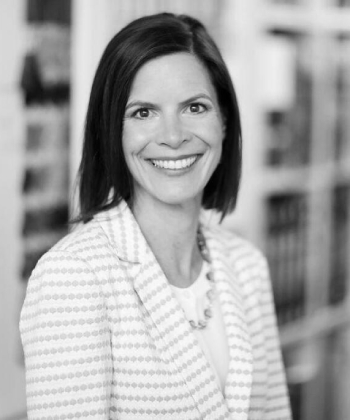Harnessing Meaningful Change: Developing a Carbon Action Strategy
This webinar is part of the RAIC 2022 Virtual Conference on Architecture, now available to stream!
Topics: Sustainability / Climate
Length: 1 hour | What's Included: Video, Quiz, and Certificate of Completion
In response to our climate emergency, the design community has an obligation to deliver a zero-carbon legacy; collaboration is required to rapidly transition the building industry into a zero-carbon sector that accounts for both operational and embodied carbon. Navigating and understanding what whole life carbon means for a project requires an intersectional response to energy sources, extraction and manufacturing practices, and supply chains across our globe.
But how do we bring this all together in a seamless design process for our clients and project teams? Designing zero whole life carbon buildings is our ultimate end goal. Along this path, understanding core strategies for driving down both operational carbon and embodied carbon before relying on renewables, carbon offsets, or renewable energy credits is a critical step in designing truly climate positive projects. With the adoption and implementation of widespread energy efficiency codes and regulations, we have seen the building sector substantially reduce operational carbon emissions while maintaining economic growth. Enactment of specific operational performance limits for energy use intensity, thermal energy demand intensity, and greenhouse gas intensity are informing the design conversation with public and private clients. A similar concerted focus on embodied carbon limits would further the industry’s ability to reduce its carbon footprint.
As a core strategic action priority for the Vancouver studio of Perkins&Will, we have set out to increase our understanding the carbon profile of our current and future work and establish a carbon leadership strategy for our studio. Through a benchmarking effort, we are examining the carbon profile of key market sector projects from 2018 onwards and offering each new client a carbon impact statement as part of our concept or schematic design deliverables. Our benchmarking effort entails completing a whole building life cycle assessment for each project and documenting the most impactful strategies for reducing the embodied carbon. Knowing that we must lead by example, this session will share the journey of establishing a carbon leadership strategy, benchmarking a diverse portfolio, and lessons learned from designing two low carbon buildings for the University of British Columbia and BC Institute of Technology.
Learning Objectives:
By the completion of this session, participants will be able to:
- Communicate/share how to build buy-in and capacity within an organization to invest in a carbon leadership strategy.
- Compare outcomes from two projects currently under design.
- Implement a process for integrating whole life carbon into the design process.
- Identify best practices and lessons learned in terms of setting carbon limits, selecting materials, and using a diverse range of software tools and databases.
Subject Matter Experts:
Kathy Wardle
Principal, Director of Sustainability, Perkins&Will
M.E.S., LEED AP® BD+C, WELL AP, RELi AP
 |
With a family rooted in the Vancouver design and real estate industries, Kathy was exposed to buildings from an early age. However, it was hiking through old growth forests on Vancouver Island and the tropical rainforests of South America that inspired her to pursue a career in environmental resource management and embark on her journey as a sustainable building consultant—an uncharted career path at the time. During her early days with the studio, her relentless passion for environmental stewardship gained her the title of being the first co-director of the firmwide Sustainable Design Initiative (SDI), which transformed the firm into the leading green practice it is today. Since that time and through leading the studio’s internal research department, she has upheld her strong belief in balancing the protection of our vital ecosystems with the business and aspirations of our clients. As Principal and Director of Sustainability, Kathy plays an instrumental role in the development of high-performance green building projects and is currently advising on three large scale projects pursuing net zero operational carbon design. Kathy manages a team of sustainable building design and energy advisors that offer clients a range of sustainability services. Kathy is well versed in sustainability issues ranging from resilient design, energy and carbon performance of buildings to the health and wellness of building inhabitants. Kathy sits on Perkins and Will’s resilient design taskforce and co-chairs the firmwide Living Design Initiative. |
Kathy Wardle
Principal, Higher Education Practice Leader, Perkins&Will
Architect AIBC, LEED AP® BD+C
 |
Jana is an Principal and Higher Education Practice Leader for the Vancouver office of Perkins+Will. Since joining the firm 14 years ago, Jana has developed strong relationships with many university stakeholders and is familiar with the unique challenges of university clients. She has been involved in various projects at universities across Metro Vancouver, Vancouver Island, and Alberta. Jana is currently leading three low carbon projects at UBC, BCIT and the University of Calgary that are striving to meet standards such as the BC Energy Step Code 4, CaGBC Zero Carbon Building Certification, and LEED Green Building Rating Systems. Her portfolio of work includes the Health and Science Centre at Vancouver Island University, the new Stadium and Student Union Building at Simon Fraser University, Orchard Commons mixed-use student housing project at the University of British Columbia (UBC), and the Earth Sciences Building at UBC. The Earth Sciences Building has earned several design and innovation awards including an AIA/SCUP Excellence in Architecture for a New Building award, and is one of North America’s largest panelized wood structures, raising the bar for the use of wood in large-scale, high-performance buildings. Jana is currently working with the University of Victoria on a new student housing project for the campus. In her role as Higher Education Practice Leader, Jana is responsible for keeping up to date with current and upcoming teaching pedagogies. She is actively involved from pre-design to construction, enabling her to develop and maintain ongoing relationships with clients and creating continuity in point of contact through the life of the project and beyond. |
Pricing A-La-Carte
This is a recording of a live event.
This webinar is part of a series! See more like this here.




